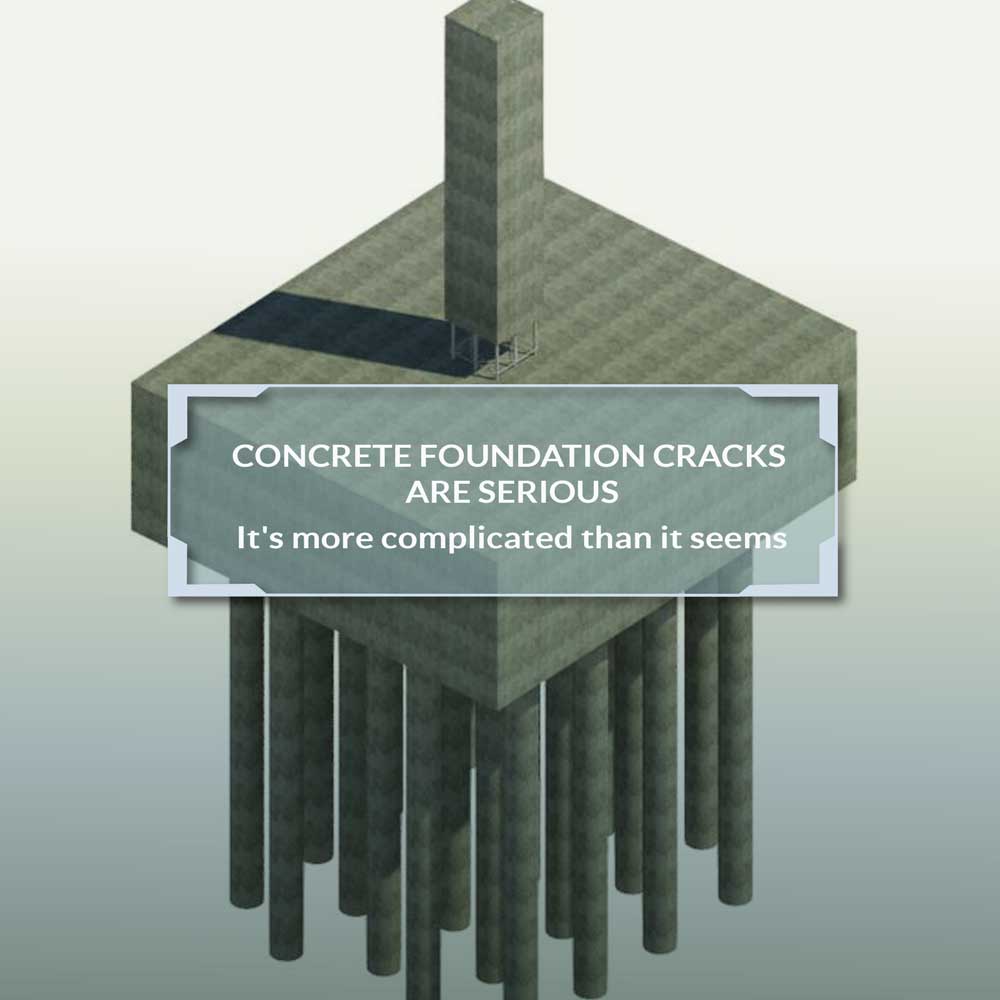We homeowners have all been there; appreciating the beauty of our costly homes… until you see those ugly cracks! These cracks are especially serious when it comes to your home’s foundation. Now, let’s clarify what we mean by foundation: usually the concrete walls surrounding a basement or crawl space. These concrete sections support the entire weight of the house, which is why these types of cracks are a cause for concern.
Before we delve into how to repair these types of cracks, let’s make one thing clear: a normal untrained homeowner should always consult with a structural engineer to determine whether concrete foundation cracks are serious or not. It is not always easy to appreciate the seriousness of a crack, so finding a competent professional structural engineer is crucial. This will prevent further damage and costs. Perfect, let’s begin our discussion!
Observation
After a home is constructed, it is important to remember that tiny, hairline cracks are typical. These types of cracks are usually the width of a sewing needle but are not usually a cause for concern. They are most found near windows, doors, and corners of any basement. Remember, this is normal and a sign of settling. In any case, if it really bothers you, you can always throw some paint on it!
If a crack is larger than the width of a sewing needle, but also doesn’t exceed an eighth of an inch then that can also be a sign of normal settling. However, one should still monitor it to ensure that it doesn’t expand. You can easily do this by marking both ends of the crack with a writing utensil, along with the date of observation. This ensures that you can meticulously keep track of these cracks, and measurably see whether it is expanding or not. This type of observation should continue once a monthly, for several months. If you do notice any expansions, then document them accordingly. If no expansion occurs and no moisture seeps through, then that crack is stable. In this case, you can fill it with grout and then smooth it out with a putty knife.
Steps Towards Remediation
If a crack ranges between one-eighth and one-fourth of an inch, then this can also be a sign of foundation settlement. However, in this case, you should take steps to seal these cracks to keep out moisture, soil, smells, or even radon gas. ** Fixing these cracks are also simple DIY repairs that involve filling the cracks with caulk compatible concrete.
Another type of crack which follows the same steps and advisory as above, is a horizontal crack near where the floor and wall meet. A horizontal crack in this area is common because basement floors are poured after the walls have been poured which means that they don’t bond properly. Other than the same types of nuisances such as moisture, soil, and smells, these cracks should be treated similarly by sealing them with caulk. A note of caution, if the crack exceeds one-half inch, then consult a contractor because they may need to inject epoxy.
If water is leaking through a crack, then you cannot simply fill the crack. Since increased moisture can lead to the development of mold and mildew, it’s important to keep the water away from the foundation wall. This can be done by removing foundation plantings, installing guttering and downspouts, and adding soil along the foundation to create more of a slope. By adding more soil, you create more of a slope to allow water to travel away from your home.
Professional Inspection
Now that you know the general idea of when a crack is not entirely dangerous, what about when it is larger than previously mentioned? Well, in these cases, it is especially important to consult a professional structural engineer. Structural engineers are professionally trained to look for factors which you normally wouldn’t. Although you may think a crack is harmless, it could have the potential to be a symptom of something larger. This would continue to cause problems even after sealing the crack which will cost you more in the future. Therefore, consulting a professional structural engineer is necessary and always advised since we cannot entirely know what is normal in a home or not.
Do you have concrete foundation wall cracks? Are you unsure of whether they are serious or not? Contact Sabio Engineering Services today! Our trained structural engineers will help in diagnosing these cracks and relieving worries!
Contact us at (929) 381-0030 or visit our website Sabioengineering.com.


